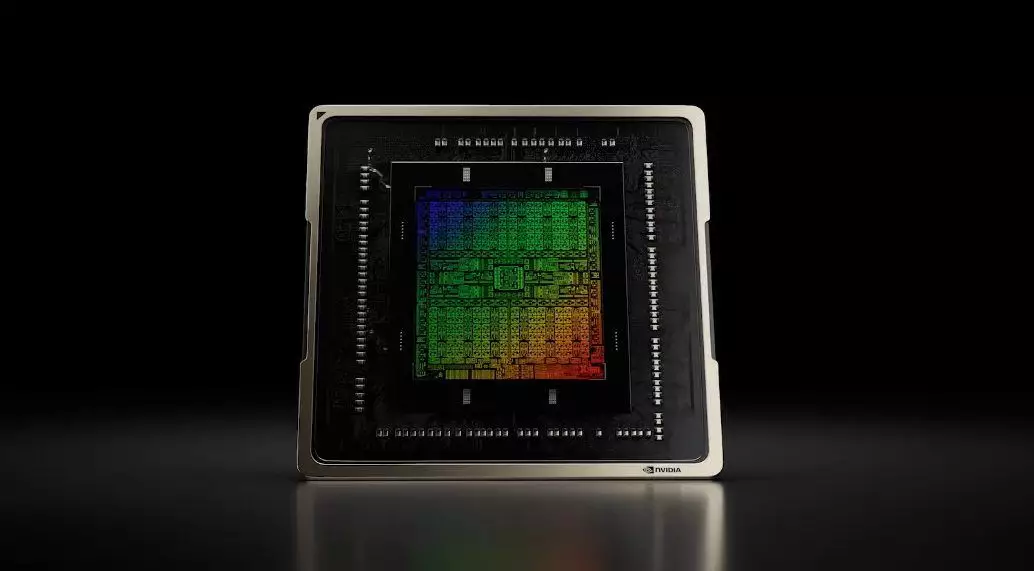In the rapidly evolving world of computing technology, Nvidia has carved out a formidable reputation for itself as a leader in graphics processing units (GPUs). With speculation swirling around its development of ARM processors, there is now a tangible anticipation for what this could mean for the gaming landscape. Recent rumors suggest that Nvidia could revolutionize the gaming laptop market with new ARM-based chips aimed at delivering impressive performance without demanding significant power, setting the stage for a new era in portable gaming technology.
For more than a year, whispers have indicated Nvidia’s interest in developing its own ARM processor. Although concrete details had remained vague, informed sources now hint that the company is targeting a new range of low-power, high-performance gaming laptops. A key player in spreading this news is tech commentator Moore’s Law is Dead (MLID), who has pointed towards a partnership between Nvidia and established brands like Dell, specifically under its Alienware umbrella. This partnership hints at the ambition of launching optimized laptops combining Nvidia’s cutting-edge architecture with ARM to challenge conventional gaming devices.
Specifically, the rumors suggest that Nvidia aims to produce chips that can operate effectively at around 80 watts, a target that would correspond to a power-efficient architecture. Sources claim that these forthcoming ARM-based chips are being compared to the mobile RTX 4070 GPU, further raising expectations about performance. When a significant player like Nvidia sets its sights on low-power gaming solutions, particularly alongside a recognizable name like Alienware, it beckons the interest of gamers who yearn for high performance on-the-go.
The gaming hardware market is notoriously competitive, and Nvidia’s proposed ARM-based chips will enter a battleground predominantly dominated by AMD. Specifically, the AMD Strix Halo APUs, which boast aggressive specifications and an array of compute units, represent a worthy adversary. The anticipated specs for these chips, including multiple RDNA 3.5 compute units and robust CPU cores, suggest that they will set a new standard for mobile gaming performance.
For Nvidia, the aim to match or exceed the capabilities of the Ryzen AI Max+ 395 – AMD’s powerhouse boasting up to 40 RDNA 3.5 compute units – illustrates the ambition at play. The prospect of an APU that can deliver performance equivalent to an RTX 4070 mobile GPU propels Nvidia further into a unique position, contemplating how to maintain – or even enhance – its standing in the market. As the stakes rise, so do the expectations from gamers who demand ever-growing graphical fidelity and gameplay smoothness, particularly from portable devices.
The impending question of who will manufacture these chips adds another layer to this complex narrative. Speculations have emerged regarding whether companies like Intel or TSMC will join forces with Nvidia for production. With the potential conclusion of Microsoft’s exclusive deal with Qualcomm concerning Windows on ARM, Nvidia’s diversification strategy could see a potential channel open for a broader spectrum of chip manufacturing partnerships.
Moreover, collaborations with firms such as MediaTek could harness innovative approaches to ARM chip production. An alliance of this nature could open doors for Nvidia, allowing for a broader and more efficient distribution of its upcoming APU technology. Given the immense expectation for the quality of gaming experiences on laptops powered by these chips, the entirety of this effort seems poised to tremendously elevate the gaming experience on the ARM platform.
As the technology landscape evolves, gamers are left pondering whether Nvidia’s foray into ARM processors could catalyze a wider embrace of Windows on ARM gaming. The sheer scale of investments and efforts described by sources signals an earnest intention to fortify the platform’s capabilities. Game developers and users alike have had serious concerns regarding performance limitations on ARM, but if Nvidia can deliver quality hardware, it could usher in a formidable transition as gaming expands its horizons onto ARM-based systems.
As the technology progresses towards a definitive launch, the collaboration between various industry players, combined with advances in Windows on ARM, may very well redefine how gaming laptops are perceived. While promises abound, it remains critical for Nvidia to deliver on its ambitious goals and redefine expectations within the gaming laptop sector.
The murmurs around Nvidia’s ARM processors have generated substantial interest, and an impatient gaming community is looking forward to innovative solutions that harmonize performance and efficiency. As we watch developments unfold, it remains clear that the landscape of laptop gaming is on the precipice of a potential transformation.

